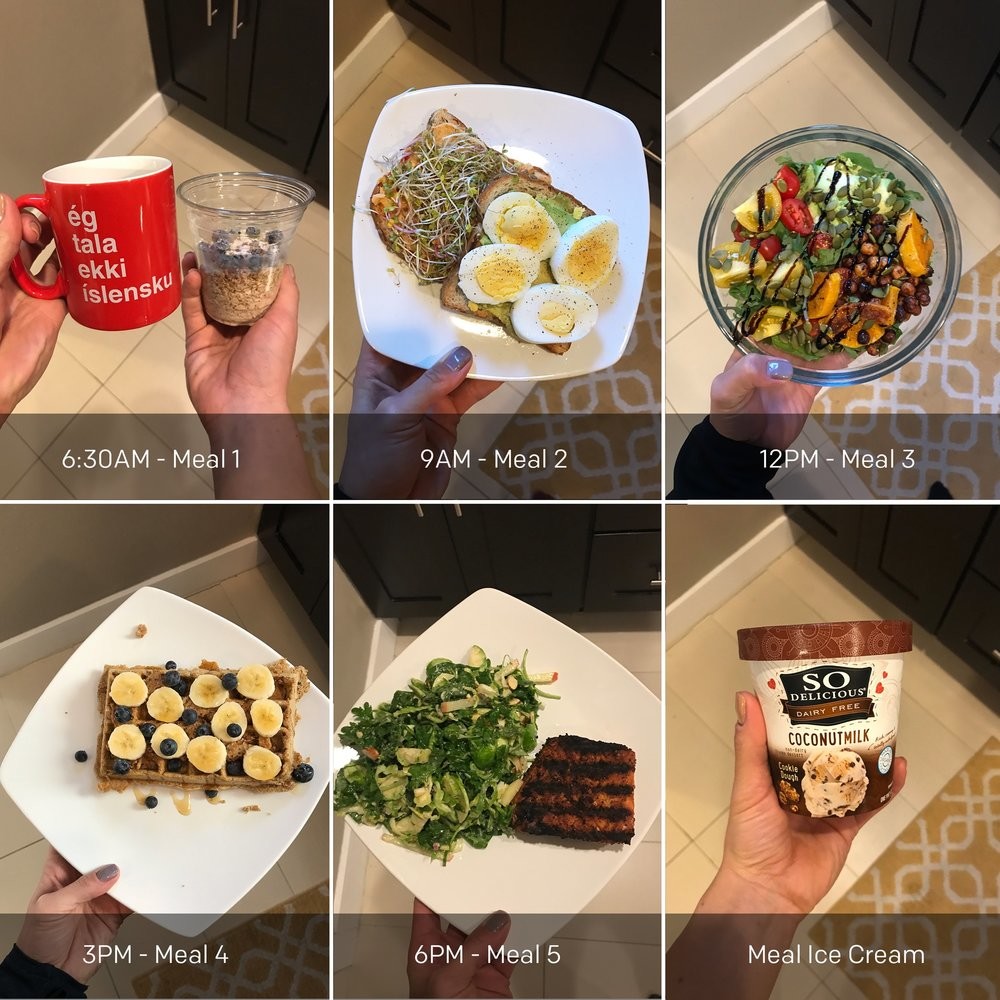Running News Daily
Running News Daily is edited by Bob Anderson. Send your news items to bob@mybestruns.com Advertising opportunities available. Train the Kenyan Way at KATA Kenya and Portugal owned and operated by Bob Anderson. Be sure to catch our movie A Long Run the movie KATA Running Camps and KATA Potato Farms - 31 now open in Kenya! https://kata.ke/
Index to Daily Posts · Sign Up For Updates · Run The World Feed
What Runners Need To Know About Intuitive Eating
Intuitive eating has been found to be associated with a plethora of positive health benefits. Here's how to combine mind-based knowledge and body-based knowledge to make it work for you as a runner.
Intuitive Eating is trending right now. If you are unsure of what this way of eating is all about, it essentially encompasses getting back to how we innately learned to eat (connecting the mind and body) before there were any rules around our food and food choices. The founders, dietitians Evelyn Tribole and Elyse Resch, define intuitive eating as “a self-care eating framework, which integrates instinct, emotion, and rational thought.”
What Are the Benefits of Intuitive Eating?
While Intuitive Eating may seem like a recent concept, it has been around since 1995. And it is a model that has been validated by sufficient research. In fact, over 90 studies to date (this number is steadily increasing as people want to study it more) have been published on intuitive eating and its 10 principles. Much of this research links intuitive eating to positive benefits, such as greater life satisfaction, positive emotional functioning, greater body appreciation and satisfaction, and a greater motivation to exercise when focus is on enjoyment rather than guilt. Heath measures can improve, too, as research points to improved blood pressure, blood lipids and dietary intake.

Intuitive eating is also inversely associated with disordered eating traits and habits, something that has become relevant in the running community. A 2016 study funded by the National Collegiate Athletic Association Sport Science Institute found that intuitive eating practices among retired female athletes helped them to feel liberated in their eating, and for some, alleviated disordered eating practices they previously experienced.
In principle, intuitive eating challenges these rigid principles and all-or-nothing thinking. It is not a diet or food plan, and there is no counting calories, carbs, points or macros involved. Instead, intuitive eating takes away the rules that we see as “normal,” since we have been following them for so long. It is a journey of self-discovery, helping you learn to connect the needs of your body and mind and eat for pleasure and enjoyment (and health, too).
All of this may sound interesting and enticing, but how does it relate to you as a runner?
Intuitive eating and sports nutrition can absolutely work together if there is a fundamental understanding of the two. Here are some key points for understanding how the principles of intuitive eating can apply to running situations.
Feel What Hunger Feels Like

A large framework of intuitive eating is to learn to honor and acknowledge your hunger and fullness. While this may sound fundamental in theory, if you’ve been following subjective rules for long periods of times, hunger cues may be blunted or non-existent. Hunger can manifest in ways other than a growling stomach. For example, learning to link other symptoms, such as headaches, fatigue, lack of concentration, and thinking about food to hunger can be a powerful reminder to eat.
Runners and endurance athletes need to eat more than the regular population (including more carbohydrates and protein), so learning to tune in to these hunger signals from the body can be an important part of adequate fueling for training.
However, You May Also Need to Eat When You’re Not Hungry
Learning to tune in to your hunger and fullness are big parts of intuitive eating, but they aren’t the only parts. Only eating when you are hungry and stopping when you feel full can quickly turn into the hunger-fullness diet.
Intuitive eating acknowledges that there may be instances where we need to eat when we don’t feel hungry, such as after a hard workout or long run. It is quite normal for appetite to be blunted when adrenaline and hormones are high post workout, however, that is not an instance where “listening to our bodies” best serves us.
The window after a run or workout is important for recovery and muscle replenishment to fuel future workouts. This is the rational part of intuitive eating that requires us to override body knowledge, sometimes. In these instances, sipping on a smoothie or protein shake, or even eating something small, is better than nothing and may jumpstart appetite. Even if your body doesn’t “feel” hungry, your mind logically knows that you need to refuel after a workout to stay adequately nourished, keep energy stable, prevent blood sugar dips and keep glycogen replenished for future activity.
Respect Your Body
There is currently more awareness on topics of body image in athletes and how negative body image in the sport is tied to eating disorders and disordered eating. Rather than encouraging comparison or trying to fit into a “standard mold,” intuitive eating takes your genetics and body diversity into account.
We’re not all meant to look the same, and we won’t all be the same shape, height or weight. Just as there are inherent differences in a mastiff and a chihuahua, our body size and shape will vary too. Respect your body for what it can do for you. Can your strong legs enable a push in the final leg of a 5k? Can the extra fat in your midsection help store extra energy to keep you fueled for the longer parts of a marathon?
The important takeaway from this principle is that your worth is not tied to your size, and your size is not directly linked to performance.
Move to Feel the Difference
There is likely something about running that has drawn us into the repetitive motion of the sport – whether it’s exploring new forms of nature on foot, clearing the mind, or the soothing sound of sneakers hitting the pavement. Whatever it is, being clear on your reasons for running can be a grounding exercise in and of itself.
Focus on how it feels to run long or hard, rather than how many calories you’re burning or what foods you get to eat upon finishing.
How do you feel after a run – Energized? Strong? Empowered? Being clear on the benefits outside of size and weight can make running feel more attainable and enjoyable.
Gentle Nutrition (Self Care)
Gentle nutrition is saved for the last principle of intuitive eating because it is important to have the foundation of body-mind knowledge before applying this principle of incorporating nutrition knowledge.
Adequately fueling your body is an act of self-care. Eating foods you like and enjoy is also an act of self-care. There can be a flexible balance between giving yourself permission to enjoy the foods you like and eating nutrient-dense foods to support your training, as well as eating the right foods in and around your training.
For example, while you may really enjoy donuts, you know that they generally leave you feeling sluggish and hungry 30 minutes later. This is a good piece of cerebral knowledge to have. While you don’t have to give donuts up completely, you can use rational thinking drawing on previous experiences to substitute them with a higher-protein option to keep you fuller for longer or pair a donut with Greek yogurt for more satiety.
You could also choose to eat the donut after your workout, rather than before, to limit feeling sluggish or uncomfortable on your run. Neither of these instances view the donut as “bad” or feel the need to restrict it. Instead, acknowledge that the donut is just a food (food is inherently neutral, not good or bad) and can still fit into your lifestyle.
The Bottom Line
In short, intuitive eating is absolutely possible for anyone and everyone, including runners and athletes. Since it combines and connects body and mind knowledge, understanding the basic components of sports nutrition can help guide some of your innate signals to lead to a non-stressful and enjoyable experience with food.
Attempting to incorporate these principles on your own can be challenging and intimidating, but there are several Registered Dietitians who specialize in this work to help you improve your relationship with food, and performance! Another great resource for the intersection of sports nutrition and intuitive eating is The Runner’s Guide to Intuitive Eating.
by Trail Runner Magazine (Sarah Schlichter)
Login to leave a comment




